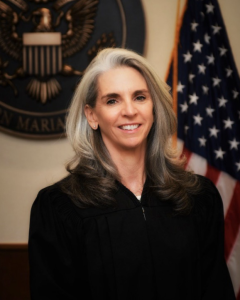CUC: $6M-$10M savings a year if power grid is fixed
The Commonwealth Utilities Corp. could realize savings of between $6 million and $10 million a year if they brought line losses down to levels comparable to the U.S. mainland—underscoring the need for the CNMI’s struggling public utility to invest directly in some of its $10 million worth of deferred utility repairs and upgrades.
Last Friday, the CUC board voted to withdraw a 2.1-cent kilowatt hour surcharge pending with the Commonwealth Public Utilities Commission. The plan is that this rate, or the “debt relief” surcharge, will be replaced with an “infrastructure improvement” charge, for which an amount or exact name will be finalized in the coming weeks.
Board member Joe Torres, who motioned for this vote, cited CUC’s 20 percent overall line losses—the energy wasted as power is transmitted along the grid.
Yesterday, chief financial officer Matthew Yaquinto confirmed that CUC’s line losses are between 18 to 20 percent, adding that, “normal ranges on the mainland are less than 10 percent and sometimes less than 5 percent.”
He said CUC will probably not be able to get below 5 percent but can get below 10 percent.
“If we get below 10 percent, say to 8 percent, it would be a savings of between $6 [million] to $10 million per year,” he told Saipan Tribune.
CUC executive director Alan Fletcher separately told Saipan Tribune that they have identified $10 million worth of needed repairs and upgrades to improve distribution efficiency and to cut losses in their power system.
Fletcher pointed out that CUC actually began with an infrastructure surcharge before it was changed to a debt service surcharge. The previous rate expired at the end of April. Essentially, CUC was aiming to renew a rate already appearing on customer’s bills.
Fletcher said the purpose of the infrastructure charge would be to accomplish electrical distribution and power related projects that have been deferred over time due to their “liquidity crisis,” or their lack of funds to meet even some short-term obligations.
While system improvements have been identified in past rate cases, Fletcher said that monies have always been diverted to buying fuel or other system priorities to keep the utility running.
“As a result we are sitting on a lot of deferred maintenance,” he said.
“Past analysis has identified $10 million in needed distribution repairs and upgrades to improve efficiency and cut technical losses. Improvements such as changing out transformers to match current loads, basically right-sizing the system to today’s needs,” he said.
“Also, replacing old dilapidated poles, cross-arms, and other hardware that will provide better system reliability during storms and allow speedier recovery,” he said.
“Cutting technical losses would have a payback, helping to better manage fuel costs,” the director said. “However, it takes direct investment to make this happen and a targeted surcharge would restrict these funds to these certain projects.”
He commended the CUC board for this move, but also added that they also have to make sure the utility can continue to operate by ensuring customers pay their bills.
Right now, CUC is still sitting on over $30 million in receivables. “While there appears to be no quick and easy solution to this crisis,” the executive director said, CUC “desperately needs receive regular monthly payments from its large government accounts to stay afloat.”
Fletcher was probably referring to the Commonwealth Healthcare Corp., among others.







This is old news – VERY old news. I have been reporting that CUC’s line losses (on Saipan) have been between 20 and 25% since 2003 – but CUC kept denying it! Only now it comes out “officially”. That simply means CUC is paying to generate “x” amount of power, but only billing for 75% to 80% of that due to what arrives as “billable” power at the end meter – and even that isn’t being paid for by some and nearly ALL “government” users. Something MUST change!
Why not try to make it to 5 percent.
So WHY is this only ‘officially’ coming out now that Fletcher is leaving?
Maybe Fletcher can shed more light on things as he leaves OR after he leaves.
Is there any ‘gag’ order by this Admin. on the real issues with CUC??
So many knew this among the many that have/are stealing power or have never been billed or are not paying due to their name and stature.
Captain, this is nothing new…Abe was really adamant about reducing technical and non technical losses as he understood that the inefficiencies directly impacts the customers…Only a technically inclined manager would know how to approach these conditions without having to debate it -This ISSUE should NOT have been “discussed” – there’s enough brain power to figure this out! No reason to “talk” about this!
I do realize this is not new. It seems that this issue has been shoved on the back burner for a while.
BTW I work with Abe in A. Samoa years ago.
I was a private contractor contracted under Hawthorn Cat involved with warrantee work for the Cat 3516 Gensets that were installed to supply back up power for ASPA. (American Samoa Power Authority)
Later Abe came on board with ASPA and turned that place around in a few years. He got his people trained and doing the maintenance and overhauls for EMDS and others.
Many of the mainframe generators also used the exhaust to generate additional power. (exhaust generators)
He is back there now. It is too bad he could not have continued here without interference.
wait, I know for the last 20 years CUC has been saying IF it gets to standards they can save money. Somehow over 20 years it has not happened.
You are spot on! Exactly what Abe first set out to do was eliminate technical and non-technical losses…The system inefficiencies directly impinged on rate payers…there’s no need for “discussing” this issue – even with meager budgets, planning in smaller but progressive phases beats doing nothing at all! Just do it!
Abe was good for Saipan…he did what needed to be done until politricks made him uncomfortable. Absolutley, almost everything done in a utility is a pass-through to us the rate payers, I am ok with that but it has to come for a decent form increases not some financial bail out.
I agree, no discussions…just do it….issues lament while this continues to happen.
Why don’t you say Corona on the insulators! Or poor connections on the connections. Infared scanners can detect those. All these line loss turns into heat which are losses or going to ground wasted. In the past CUC have been putting the blame on Power thieves! Btw, Abe Malai was not an engineer! He was excempted from the requirement of the Interior because of his Samoan connections.
These are two different thought processes. Coronas on the insulators with conductors is a indication of line loss, correct. Look at my comment, it addressed that. Dissimilar metals connected is another potential indicator…I mentioned that….and your right! Absolutely, heat as the insulators have a target ambient operating threshold, otherwise the dielectric integrity is compromised. Im glad you mentioned that. Changing out the Generation plants too are a big help…if they are efficient, concrete savings will be substantial and measured.
It would be ideal for a utility to have an executive who is also an engineer, but not always necessary as he could surround/procure services to lead this objective.
Perhaps it was connections…I don’t doubt it…but it’s a lot better than Tim and Alan. Im not defending Abe…Im just saying he was the better of the history CUC had. Invite real Independent Power Producers and fix the T&D systems…have a credible Revenue Protection Service to go after thieves and have the legislature make it more than a slap on the wrists…how about them apples?